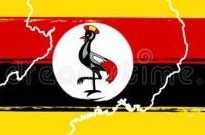Chemistry Form Four Necta Format for Certificate of Secondary Education Examination(CSEE)

1.0 INTRODUCTION
The revised chemistry Examination Format is based on the 2007 Chemistry syllabus. The 2007 syllabus has been improved to focus more on acquisition of competences rather than content. Hence, the 2001 Chemistry Examination format had to be revised to accommodate the changes in the revised syllabus of 2007.
The main features in which the new revised examination format differs from the old one are:
- Exclusion of Alternative to Practical Examination paper since the New Syllabus intrinsically inculcates entrepreneurial skills, to learners. This will put into practices when approved by the Ministry of Education and Vocational Training
- In both theory and practical papers, candidates will attempt all the questions. This has deliberately been done to ensure that all candidates are tested on the same competences. It is hoped that the move will motivate more candidates to study Chemistry.
- The revised Examination Format will be effective in 2011. This implies that the 2001 Chemistry Examination format will continue to be used up to 2010.
- GENERAL OBJECTIVES
The main objectives of the Chemistry examination are to test the candidates’ ability to:
- apply Chemistry knowledge, skills and principles in everyday life activities.
- design and perform experiments.
- understand symbols, formulae and equations to communicate in Chemistry.
- apply the scientific principles and knowledge in exploitation of natural resources with conservation of the environment.
- GENERAL COMPETENCES
The examination will specifically test the candidates’ competences in:
- ability to demonstrate Chemistry knowledge, skills and principles in solving daily life problems.
- developing knowledge on Chemistry by doing various activities and/or experiments.
- ability to demonstrate chemical symbols, formulae and equations to communicate in Chemistry.
- using science and technological skills in conserving and making sustainable use of the environment.
- EXAMINATON RUBRIC
There will be two papers; 032/1 Chemistry 1 and 032/2 Chemistry 2.
- 032/1 Chemistry 1
This will be a theory paper of 3 hours duration and will comprise thirteen questions in sections A, B and C. Candidates will be required to answer all the questions.
- Section A will consist of two questions. Question one will comprise ten multiple choice items and question two will comprise ten matching items. This section will weight twentymarks.
- Section B will consist of nine short answer questions. Each question will comprise two items. This section will weigh fifty-four marks.
- Section C will consist of twoessay questions without items. This section will weigh twenty-six marks.
4.2 032/2 CHEMISTRY 2 PRACTICAL
This paper will be of 2½ hours duration and will consist of three questions. Candidates will be required to answer all of them.
Question 1 will be on Volumetric Analysis and Laboratory Techniques and Safety. Question 2 will be derived from Ionic Theory and Electrolysis/Chemical Kinetics, Equilibrium and Energy. Question 3 will be on Qualitative Analysis.
Questions 1 will carry twenty (20) marks and the remaining questions will carry fifteen (15) marks each.
The use of qualitative analysis guide pamphlets will be allowed in the examination room. Advance instructions and 24 hours advance instructions will be sent to the schools to enable them to prepare apparatuses, equipment and materials required for the examination, well in advance.
NOTE: This paper will have more than one alternative papers which will be sent to schools depending on the number of candidates.
5.0 EXAMINATION CONTENT
5.1 Introduction to chemistry
5.2 Laboratory techniques and safety
5.3 Heat sources and flames
5.4 The scientific procedure
5.5 Matter
5.6 Air, combustion, rusting and fire fighting
5.7 Oxygen and hydrogen
5.8 Water
5.9 Fuels and energy
5.10 Atomic structure
5.11 Period classification
5.12 Formula bonding and nomenclature
5.13 Chemical equations
5.14 Hardness of water
5.15 Acids, bases and salts
5.16 The mole concept and related calculations
5.17 Volumetric analysis
5.18 Ionic theory and electrolysis
5.19 Chemical kinetics, equilibrium and energetic
5.20 Extraction of metals
5.21 Compounds of metals
5.22 Non-metals and their compounds
5.23 Organic chemistry
5.24 Soil chemistry
5.25 Pollution
5.26 Qualitative analysis
